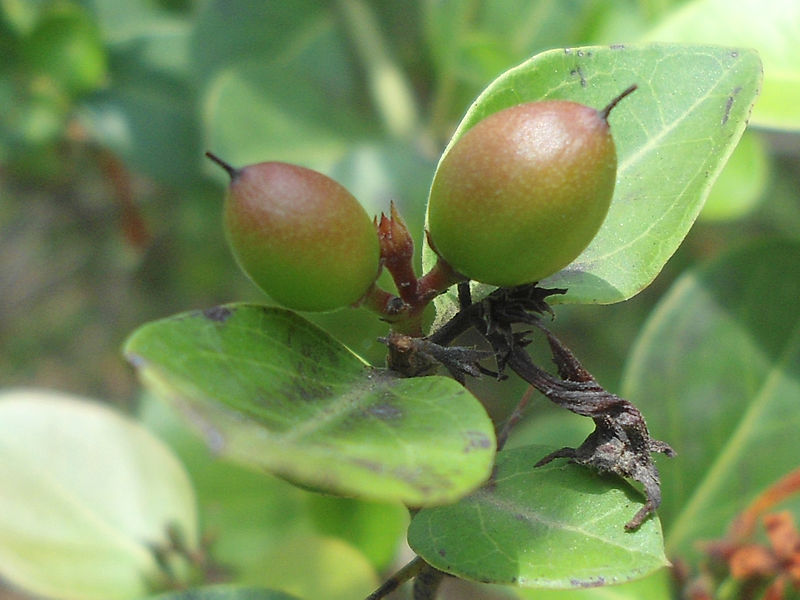
A new year usually draws a fresh batch of nutrition-boosting superfoods into the spotlight. There are no set criteria for determining what is and what is not a superfood, and while the title is widely regarded as a useful marketing tool, certain types of foods clearly capture the public’s imagination.
While numerous glowing reports and contradicting articles battle for online supremacy, various trendy superfoods are included as part of health conscious family meals. Kale was everywhere last year. Avocados and kiwifruit are perennial favorites. Let’s take a look at five new superfood trends for 2017.

-
Mushroom Coffee
Let me make it clear – I am a bigger fan of green tea than coffee and prefer healthier coffee alternatives such as dandelion root. While there is some debate regarding its potential health benefits, it’s far too easy to drink too much caffeine, overdoing it on added sugar and cream. If you’re serious about expanding your healthy lifespan, you are better off switching a few cups of your coffee to green tea. That being said, this article examining the latest superfoods for 2017 features some new and exciting ingredients, and the idea of mushroom coffee is certainly intriguing.
A Finnish company called Four Sigmatic produces mushroom-infused coffee products by combining mushroom extract powders and organic instant coffee grounds. The company claims the maitake mushroom regulates blood sugar levels, while the chaga variety reduces coffee’s natural acidity. But is there any evidence to validate these claims? “There is some research to show that the maitake mushroom may lower blood glucose in patients with type 2 diabetes,” says nutrition editor Cynthia Sass, RD.

-
Algae Fats
One for the vegetarians and vegans – until recently, one of the only natural ways for non-fish eaters to supplement their essential omega-3 fatty acids was via flaxseeds. Unfortunately, not all types of omega-3’s are present in the delicious seeds, with eicosapentaenoic acid (EPA) and docosahexaenoic acid (DHA) found only in marine oils. So what do you do if you avoid animal products? You turn to the place where fatty fish like salmon and tuna get their omega-3 fats from, the source of their food – algae.
There are now several different brands of algae oil available to buy, boasting an extremely low saturated fat content and a high monosaturated fat content. The smoke point of algae oil is also incredibly high, at 485°F. The process of producing algae oil is also much gentler on the environment.

-
Offal
One for the carnivores – as surprising as it may sound, offal (an animal’s entrails and internal organs), could be the next superfood champion of 2017. If you can stomach it (no pun intended), offal is a fantastic source of vitamins, omega-3 fatty acids and amino acids. Pork and beef hearts, kidney, liver and other organs deliver iron, selenium and essential antioxidants to the body. If you’re a meat eater and interested in youth preservation, you should consider the benefits of organ meat.
The price of offal is another attractive selling point, being much less expensive than muscle meat. Even though offal is a staple part of many cultures’ diets, it hasn’t been widely accepted in modern western cuisine, so introducing it to your family could prove a stumbling block unless you get sneaky.

-
Maqui Berries
Growing wild in the hills and rainforests of Chile and Argentina, maqui berries are rich in vitamin C and also contain super high concentrations of an anthocyanin antioxidant called delphinidins.
The delphinidins demonstrate potent anti-inflammatory activity, helping to reduce the risk of a variety of degenerative diseases that involve inflammation. If you’ve read all the information regarding blueberries and their anti-aging benefits, it’s worth noting that maqui berry extract has produced even more impressive results.

-
Kakadu Plum
Being a native of Australia, this roundish, light green, tangy fruit has some rather colorful and interesting soundings names – gubinge, billygoat plum, murunga. It’s commonly known as the Kakadu plum, and it’s a vitamin C powerhouse, ranking among the highest known natural sources and making it of extreme interest to anyone interested in youth preservation.
Vitamin C can reduce hyperpigmentation and prevent skin changes caused by photoaging. A study by the Beeson Aesthetic Surgery Institute has shown significant results in the use of vitamin C to reduce the formation of wrinkles.
The Kakadu plum contains even more antioxidants than the blueberry – delivering over four times more phenolic compounds and ten times more potassium. Edith Cowan University’s Foundation of Aging and Alzheimer’s Disease notes that the Kakadu plum also contains antioxidant properties seven times greater than curcumin, useful for fighting free radical damage.
Add all of the Kakadu plum’s benefits together, along with trace minerals, including vitamin E, iron, lutein, zinc and folate, and you have a potent superfood which can help prevent premature aging.




Greetings I am so happy I found your blog page, I really
found you by accident, while I was researching on Askjeeve for something else, Regardless I am here now and would just like to say thank you for a remarkable post and a all round enjoyable blog (I also love the
theme/design), I don’t have time to read through it all at the
minute but I have bookmarked it and also included your RSS feeds, so when I
have time I will be back to read a lot more, Please do keep up the superb work.
Thank you for the lovely compliment and I will continue to churn out valuable information for you. Have a healthy day!
Hello Zora,
Excellent article! Very interesting!
Thanks Michelle!